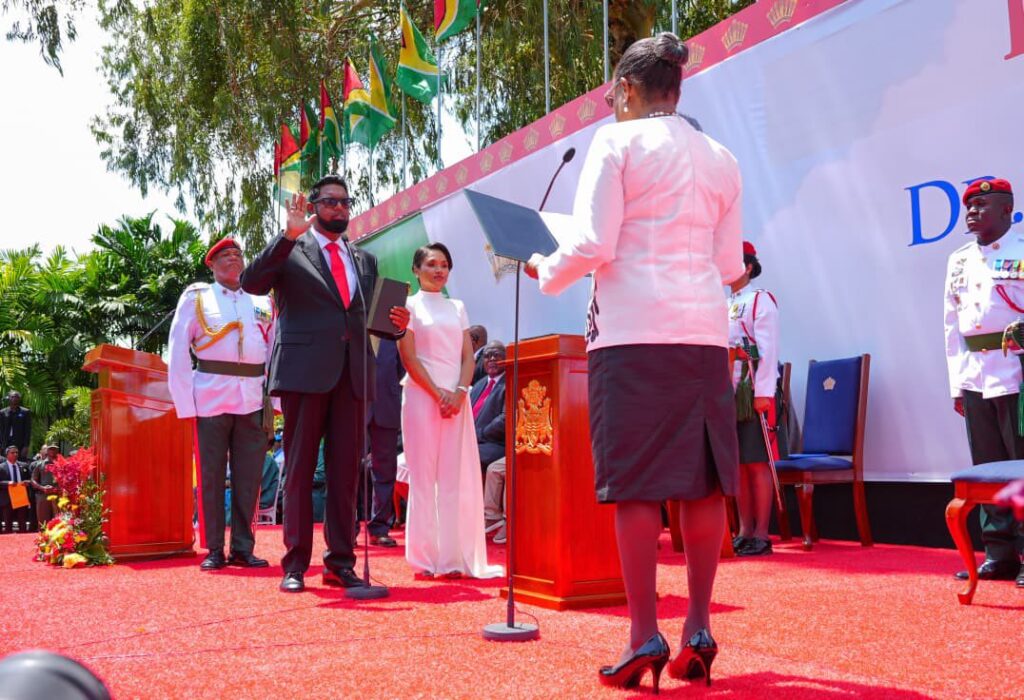The People’s Progressive Party/Civic (PPP/C) has secured victory in Guyana’s 2025 general elections, maintaining control over one of the world’s most promising emerging oil economies. President Irfaan Ali’s administration will continue to lead a nation transformed by offshore petroleum wealth, with the 2025 state budget set at GYD 1.382 trillion (USD 6.628 billion), 37% of which is funded by oil revenues.
The PPP/C received 242,497, earning the party 36 seats (three more than in its previous term) in the National Assembly, reflecting broad public endorsement of its economic and energy policies.
Opposition Dynamics
The opposition landscape shifted with the emergence of the We Invest in Nationhood (WIN) party, founded just three months ago by businessman Azruddin Mohamed. WIN secured second place with 109,075 votes across two districts, drawing support from the traditional opposition party, A Partnership for National Unity (APNU), which dropped to third with 77,988 votes. WIN has secured 16 seats while APNU will have 12 seats in the National Assembly. The Forward Guyana Movement secured one seat with 4,332 votes. The results were confirmed on August 6 following a recount requested by APNU.
Oil Sector Background and Economic Impact
Since ExxonMobil’s first offshore oil discovery in 2015 and the commencement of production in late 2019 in the Stabroek Block, Guyana has transformed economically.
Guyana, home to about 800, 000 people, has already seen a significant financial boost, having collected over USD1 billion in oil revenues so far this year. The total income from royalties and crude sales is projected to reach around USD2.5 billion in 2025. Looking ahead to the end of the decade, as production expands further and cost recovery declines, the government’s annual earnings from oil are forecasted to increase substantially, potentially nearing USD10 billion. The country’s annual profit oil payments are set to nearly quadruple to more than USD10 billion by the end of the decade, according to ExxonMobil.
ExxonMobil and its partners Hess and CNOOC have developed multiple mega-projects, including Liza 1 and 2, Payara, and the recently launched Yellowtail project with a production capacity of 250,000 barrels per day, pushing total capacity to over 900,000 barrels per day. By 2030, ExxonMobil Guyana expects to have total production capacity of 1.7 million oil equivalent barrels per day from eight developments.
Geopolitical Challenges
Despite the electoral win, the PPP/C government continues to confront geopolitical risks tied to Venezuela’s longstanding but intensifying territorial claim over the Essequibo region—home to most of Guyana’s proven oil reserves. Venezuela’s recent referendum reasserting sovereignty claims has raised tensions, although oil production has proceeded without direct interference amid ongoing International Court of Justice proceedings.
This unresolved dispute adds complexity to Guyana’s investment climate and necessitates robust risk management strategies for international oil companies and policymakers alike.
Political and Economic Outlook
The election result removes immediate uncertainty around ExxonMobil contract renegotiations, affirming the PPP/C’s mandate to continue its current oil sector policies. However, opposition parties’ critiques about revenue transparency and management signal that oil wealth governance will remain a political issue in future elections.
As political dynamics evolve, the government faces the dual challenge of managing burgeoning oil wealth prudently while addressing external geopolitical threats.
Looking Ahead
With electoral stability secured, Guyana’s priorities turn to maximizing the potential of its oil and gas sector. Expanding offshore production and advancing gas utilization projects are central to sustaining economic growth and energy security. Concurrently, resolving the territorial dispute with Venezuela remains critical to securing the long-term viability of Guyana’s oil industry and investment environment.






